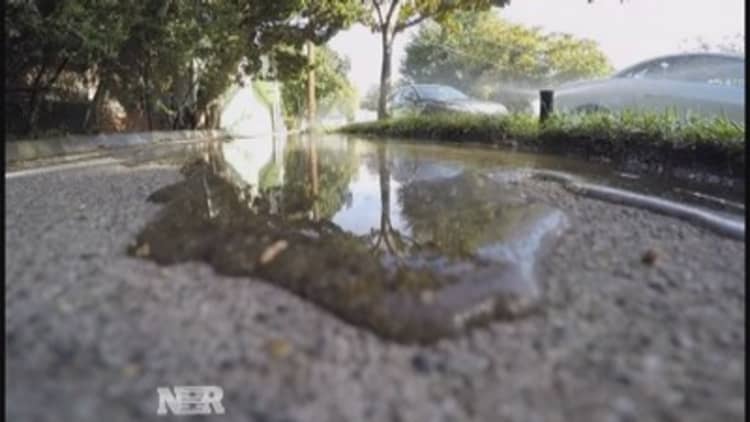The Southwest and Central Plains regions of the United States could see the worst droughts to hit North America in 1,000 years, according to a new set of bleak projections from a group of climate scientists from NASA, Cornell University and Columbia University.
The findings also indicate that moderately reducing carbon emissions in the next 50 years is unlikely to hold off these periods, including at least one "megadrought" that could hit by the end of the century, according to the climate scientists. These arid periods will be drier, cover greater areas and last longer than anything we have experienced so far, and they could threaten not only natural ecosystems, but destroy the regions' agricultural sectors.
The work was funded by NASA and the National Science Foundation and published Thursday in the peer-reviewed journal Science Advances.
Read MoreTexas may dodge worst of the oil bust
The researchers developed several possible future scenarios that ranged from what they called the "business-as-usual" scenario, where atmospheric carbon levels continue to climb until the end of the century, to more moderately optimistic projections where carbon levels begin declining around 2050. They then compared their projections with evidence from past periods of climate change found in tree rings.
In every case, the projections indicated that big droughts will likely strike both the Central Plains region and the Southwest sometime in the next several decades.
"Even the scenarios that were fairly optimistic, in my opinion, will still bring about serious challenges for the Southwest and Great Plains," researcher Jason Smerdon told CNBC.

The results do not bode well for the agricultural future of the country—both regions are key producers of food, and persistent droughts in them would seriously limit food-production options.
Smerdon noted that serious droughts have already occurred in some areas—California's ongoing battle is the latest, but 11 of the past 14 years have been drought years across many Western states, according to the U.S. Drought Monitor data cited in a press release announcing the study. Groundwater supplies that typically provide relief during droughts have been depleted.
"These are troubling results regardless of what we do, but it is important to point out that these scenarios are based on choices we haven't made yet," Smerdon said. "So they are only projections—they are not commitments. But, there is a great urgency to those choices."


